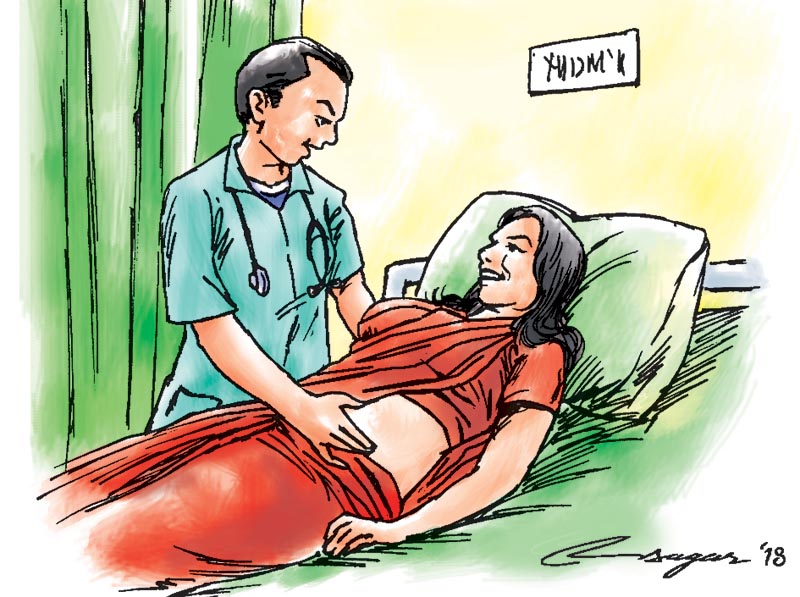Women more susceptible to osteoporosis: research
Kathmandu, October 20
Out of ten surgeries for fractures, one surgery is conducted for osteoporosis on a daily basis in Nepal Orthopaedic Hospital, Jorpati.
Osteoporosis is a bone disease in which the density and quality of bones are reduced, said Mukti Timilsina, consultant orthopaedic surgeon at Nepal Orthopaedic Hospital.
Data provided by National Trauma Centre revealed that out of 64 osteoporosis patients visiting the hospital daily, 52 were women.
“The bones constantly dissolve and construct themselves till the age of 30. But after thirties, bones start breaking down and there is not much reconstruction happening. It results in brittle bones, which is susceptible to fractures, mainly on the spine, hips and wrist,” added Timilsina. Women were more susceptible to osteoporosis, said the doctor. Menopause, lifestyle and dietary behaviours were important factors for the health of bone in women. A rise in thyroid hormone has also been identified as the cause of osteoporosis in women.
A research conducted over a duration of six months from October 2017 to March 2018 by Timilsina and his team, which was published as ‘Association of Lifestyle and Food Consumption with Bone Mineral Density among People Aged 50 Years and Above Attending the Hospitals of Kathmandu, Nepal’ on May 2019, in the Journal of Osteoporosis, had concluded that high prevalence of osteoporosis was found in women.
An analytical cross-sectional study conducted among 169 people of age 50 years and above, who underwent Dual Energy X-Ray Absorptiometry scan in the hospitals of Kathmandu valley revealed that the prevalence of osteoporosis, osteopenia, and normal bone mineral density was 37.3 per cent, 38.5 per cent, and 24.2 per cent, respectively. Out of 63 patients, 54 women were found to have suffered from ostereoporosis, according to the research.
Osteoporosis was positively associated with age and smoking, the research revealed. The bones in women start to weaken after menopause. “After menopause there is reduction in the estrogen hormone which is responsible for bone protection, making women vulnerable to osteoporosis. As there is less calcium deposition in the body, bones in women’s bodies break from a fall, even from sneezing or minor bumps,” he added.
“With ageing, people start losing bone density,” said Dipendra Pandey, osteoporosis physician at National Trauma Centre.
Women mostly come to the hospital only when they encounter fracture of bones, said Pandey.
Food and sedentary lifestyle too are blamed for brittle bones among women. To keep their bones healthy, women must consume foods rich in calcium and vitamin D. Calcium and vitamin D supplements can also be taken, suggested doctors.
Osteoporosis was found to be significantly associated with sex, age, smoking habit, and daily calcium consumption. Therefore, women must consume nutritious food and exercise regularly, advised Dr Timilsina. Sitting under the sun is necessary for women as sunlight is a source of vitamin D. It is necessary for calcium absorption, according to Pandey.
World Osteoporosis Day is observed worldwide on October 20, to raise awareness about the prevention, diagnosis and treatment of the disease.






